QuestionQUESTION: My GSD is 10 months old. He has become what seems to me to be very jealous of our 3 year old lab. The shepherd is constantly hanging off the labs neck or jowls. Not always in an agressive manner, but it can become so if the lab finally decides that he has had enough and gets ugly himself. It also seems as if there is some jealousy because it only occurs when my husband and I are in close proximity, or they are both being let into the house after being outside.
ANSWER: It appears that your GSD may be engaging in a rank related struggle but I can't see anything from here. If this behavior began "innocently" (with no rank related motive) and you or husband paid attention to the dog because of it (simply because it is annoying to you) you may inadvertently have rewarded the behavior; even negative attention (like yelling "stop it") can "train" a behavior. If you have basically attempted (and SUCCEEDED) at IGNORING this behavior (although observing it), then the age(s) of both dogs suggest a rank struggle.
At ten months and due to temperament/type, the GSD is achieving the first level of adult behavior (one year); the Lab, at age three, is at the second level (age three to five). If temperament in both dogs is close (meaning one is not significantly and noticeably less "dominant" than the other), there is about to be a struggle for dominance between the two that can erupt into full blown fights. The GSD is either attempting to prevent the Lab from interacting with you first (or even at all for that matter), which would be resource guarding, or has misinterpreted the Lab's interaction (perhaps your husband plays "rough" with the Lab??) and is attempting to "guard" or "control" the Lab. However, the fact that he struggles to get through doorway(s) into the house before the Lab strongly suggests a problem with rank.
You'll have to offer much more information:
1. What sort of training have you done (or not done) with both dogs (especially the GSD)
2. Are both dogs neutered
3. How do both dogs interact with other dogs (in dog parks, if dogs visit your home, on leash outdoors, etc.)
4. How does the GSD behave toward humans (yourselves and "strangers")
5. What other behavior(s) does the GSD have that might indicate a rank opportunism problem in regard to the humans in the household (blocking doorways, leaning on people, lying directly in the path of people when they are seated, sitting/lying at tops of stairs, etc.)
6. How bidable is the GSD, does he work willingly (if you've trained him)
7. When did this behavior begin (how recently)
8. What do YOU DO when the GSD hangs off the Lab and how do you manage the situation when the GSD attempts to force his way past the Lab into your home
9. What can you tell me about temperament of both dogs from your perception.
Please answer questions in order of appearance and give any other info you think might be of assistance and I'll try to help you straighten out this situation before it worsens.
---------- FOLLOW-UP ----------
QUESTION: in answer to your questions:
1. Both dogs have basic obedience training. Both will come> sit, lie down, give paws. "Staying" is still not good.
2. Both dogs are neutered
3. Both dogs are very friendly with other dogs. They have both been to "doggy day care" in our area with no problems.
3. GSD loves all people. He has spent his formative months in the office with us and 15 other staff members. He is very friendly when guests arrive at our house.
4. The GSD does need to be "touchy feely" with both of us, especially me . Rubbing his nose over my clothes when I greet him in the morning etc. ( there are no children in our house)
5. He is very easy to get to do the few things that we have taught him.
6. This behaviour began now that I really think about it when we started lweaving him home all day with the lab and our other dog a very old female akita . About three months ago.
7. When he starts this behavior. I tell him "no" to which he pays very little attention, and goes right back. Then I remove him by hand and make him sit (which he fights, but i hold him by the collar) when he makes eye contact a this point I praise him, and let him go. This goes on for about ten minutes and then they seem to settle down.
9. The lab is very docile and gentle even though he is half husky. He is certainly not agressive. The GSD is also pretty easy going as shepherds go. He was bred at New Skete New York especially for temperament, and he has been the best behaved puppy We have ever had until this particular problem started.
AnswerAlthough the Monks offer good advice regarding choosing a breed, evaluating temperament and early puppy development, their training techniques are AWFUL and their understanding of the dog culture is WRONG, totally WRONG. One does NOT do "alpha rollovers" under any circumstances; the training philosophy that says offering high value reward in training is "bribery" is dead wrong and reflects total ignorance of classical conditioning; holding a dog's paws when it jumps up on you is absolutely NOT the way to teach a dog not to jump up, can do serious orthopedic harm (especially in breeds with hip problems) and can result in the dog beginning to defend itself by using its mouth (NEVER a good idea.) These methods are outdated and non-productive and have been for a very long time. Further, in the older edition of "The Art of Raising a Puppy" the Monks advocate ""How hard should you hit your dog? If she doesn't yelp in pain you haven't hit her hard enough." -- pg. 44 EXCUSE ME? Throw this garbage into the trash, all of it.
For information on "pack" structure (we are not part of that social structure because we are created conspecifics AND three dogs is NOT a "pack", not to mention that the "pack" structure is designed to promote COOPERATION, not a dominance hierarchy), how people misunderstand the dog culture and how positive reinforcement training succeeds, see this video by Dr. Ian Dunbar:
http://www.dogstardaily.com/videos/training/194
Your dogs don't "stay" because they have not chosen to work for you, they have most likely been coerced, and there's a dynamic between/among them that is being ignored. Coercion, "punishment" and "discipline" (like scruff shaking, ye GADS!) do not produce a trained dog, they produce a fear conditioned dog. Psychological "dominance" in the human over the dog is a misnomer: we are created conspecifics, we are not dogs, dogs know this, and so when a human attempts to deal with a dog in the manner another dog would use, the subject dog becomes confused, sometimes frightened, loses trust in the human and can then attempt to exert its own influence in the environment in order to take control of what it perceives as a chaotic, little understood, confusing and anxious environment. This is rank opportunism. Any herding/guarding or such type breed has a stronger predilection toward rank opportunism because, by its nature, these animals have been bred (historically) for independent thought, control and defense. Your Lab is also a Husky X, meaning the temperament most likely leans toward independent and "stubborn" behaviors, not the compliance that the purebred Lab is supposed to demonstrate.
A rank opportunist will exert his influence on (first) any other dog in the household that exhibits any behavior that the opportunist receives as problematic; that dog may then continue and address the "problem" behaviors of its human companions. Your GSD is most likely attempting "control" of your Lab and it appears leaving them alone is a BAD IDEA since this situation can easily develop into a full blown fight. You will not be there to intervene (although such intervention can result in serious injury and often worse), you will not be there to oversee their interaction (which means the GSD and Lab will continue the body language communication that is propitiating these controlling behaviors by the GSD, you will not be there to redirect both dogs if the GSD gets "pushy" with the Lab, and the situation will steadily worsen.
In order to teach any dog to work VOLUNTARILY, one must use the method that has scientific basis and WORKS: positive reinforcement. In the case of your dog(s), I suggest using an event marker (clicker). Once dog(s) is conditioned to the clicker and knows a treat is coming, the dog will WORK FOR THE CLICK (so long as treat is not totally extinguished, one can't do that for a long time). The clicker gives you the opportunity to reward the appropriate body language when two dogs are developing a problem: that body language is lip licking, yawning, turning head, changing position, i.e. ANY "calming signal" offered by both dogs in question and ESPECIALLY the appropriate (desired) response by the opportunist which would be APPEASEMENT or TURNING AWAY.
Your response to question 7 indicates that you are managing this problem INCORRECTLY. 1. You are removing the 'wrong' dog; 2. You are then forcing that dog to obtain a subdominant position (against his will and against his culture); 3. He is not submitting to you and needs to be coerced (your leadership is in question in his behavior); 4. He persists despite your objections, is confused by your lack of understanding of this situation (he's a dog, he does not know you can't think like he does and he does not know you can't communicate or read his body language); 5. You are coercing him into a behavior he is NOT really offering and when he makes eye contact with him you LET HIM GO, thereby demonstrating that you are NOT in charge (direct eye contact has to be followed by voluntary redirection to rewarded/trained behavior; if not, direct eye contact tells the dog that he has made a "statement of rank" to you and you have acquiesced). This is a DOUBLE MESSAGE. 6. He clearly is at a loss regarding leadership and, benignly (so far), is demonstrating the beginning of rank opportunism toward you (greeting behavior). STOP.
You must, ASAP, obtain a clear understanding of dog body language. Should you choose to follow my suggestions, you will do this by studying Turid Rugaas' book and video, "Calming Signals: On Talking Terms with Dogs", found here:
http://www.dogwise.com/itemdetails.cfm?ID=DTB527
As a primer, try her online site (but you need to get the entire picture and this requires purchase of the book/dvd):
http://www.canis.no/rugaas/index.php
Part of your study/self education involves learning about operant conditioning (use of the clicker) from the professional who introduced it to the dog training world, Karen Pryor. First, you will read her book, "Getting Started: Clicker Training for Dogs" and I also suggest you read her "thesis" "Reaching the Animal Mind: Clicker Training and What it Teaches Us About All Animals". Using an event marker, I can (and have) gotten marine mammals and horses to "perform" behaviors captured and shaped. You can't grab a dolphin by the collar. THIS TRAINING WORKS. It will allow your dogs to VOLUNTARILY work; this promotes you psychologically, increases cognition in the dog, reduces the dog's anxiety (because coercion, which is confusing and frightening to the dog, is removed) and is FUN for you and the dog(s). The GSD needs a JOB: using the clicker you can teach your dog to "find it", "bring it", "go to (any place)", "control" (balls in the yard), all of which a well bred GSD is born to do and WANTS TO DO. A dog with no training is a wasted brain and especially a dog that is highly bidable (as you describe your GSD to be.)
Karen also has a web site (but you MUST get the science behind the method by reading the book): ClickerTraining.com, where there are many videos and articles related to all phases of clicker use, including how to extinguish behaviors you don't want.
You might want to take a look at Dr. Ian Dunbar's video on dog fighting and hierarchical problems among dogs in the same household:
http://www.dogwise.com/ItemDetails.cfm?ID=DTB593
While you're undertaking this self education, put both dogs (Lab and GSD) on Nothing In Life Is Free (NILIF). Do this by re-teaching "sit" in the following manner:
http://home.gci.net/~divs/behavior/bemod_relax.html
NILIF means: dog(s) must earn everything: being petted, greeted, fed, played with, going in/out of outdoor doorways, EVERY TIME. You'll have to put both dogs on NILIF because you absolutely cannot promote one over the other (psychologically). I can't see anything from here, I can't talk to you, and I don't want whatever is developing between the lab and GSD to worsen (and we don't know for sure it's the GSD's "fault", do we?) Greeting behavior is especially important for the GSD: do NOT allow him to "nose" you around UNLESS he has done a "sit" first. This interrupts whatever the motivation is (control or anxiety) and brings cognition into the situation (dog thinks about the "sit" then performs it). Observe the coming in/going out behavior of both dogs at outdoor doorways: if the Lab FREELY allows the GSD to go first, "sit" them both and let the GSD out first; if the Lab RESISTS and the GSD needs to use persistent force (pushing) to get out first, "sit" them both and let the Lab out first. Then watch carefully at what happens when they return (to come back in); over the course of a few days, the chosen "first" dog should easily pass through doors (after the mandatory "sit") without objection from the other. You have no established "rank" (hate to use that word because it's not really what's going on) when it comes to DOORS (not necessarily anything else).
Don't leave these dogs alone; separate them by confining each to its own area (kitchen, unused bedroom (NOT YOUR BEDROOM), laundry room (with window), no basement, no garage, etc. Make this confinement pleasant by giving both dogs a soft bed, water and interesting (safe) toys, such as a Buster cube. Don't make a big deal out of it, just put them in there (confine them out of sight of one another) and be done with it. This confinement will also make a statement that neither dog is "in charge" of your household while you are away and will diminish anxiety further. When you return home, ask each to 'sit' before ending confinement and observe how they greet ONE ANOTHER. Use Turid's information to read their body language. By closely observing this communication you will get a FAR clearer understanding of their relationship and the reason(s) behind the GSD's pushy behavior toward the Lab.
Meanwhile: INTERRUPT (do NOT yell "NO" or anything else) the GSD's pushy behavior toward the Lab. Clap your hands, whistle, bang the wall, do NOT LOOK at the dogs or use their name. This startle response (both dogs should look at you and perhaps even come toward you) will create a crucial five to ten second interval between what's occurring between them and what HAPPENS NEXT, which is YOU asking for a "sit" (voluntarily) for praise/reward. When you've gotten to the point where the dogs understand the clicker and have begun to work and you have obtained some information regarding dog body communication, you will be able to SEE WHAT'S BEING COMMUNICATED before, during and after the problem behavior. By this point, both dogs should have been separated when you are not at home (for a while, perhaps a few weeks) and there should be a marked change in their interaction (because of your efforts at training and the NILIF). Once you can SEE and UNDERSTAND, we'll need to proceed further. Re-post with your observations using the followup feature. It might not be necessary to go further, the behavior modification program of NILIF and positive reinforcement, plus your ability to reward (click/treat) appropriate communication of appeasement and affiliation between the dogs, might do the trick. But this is WORK, and if you don't do it, you'll most likely have a far more serious problem.

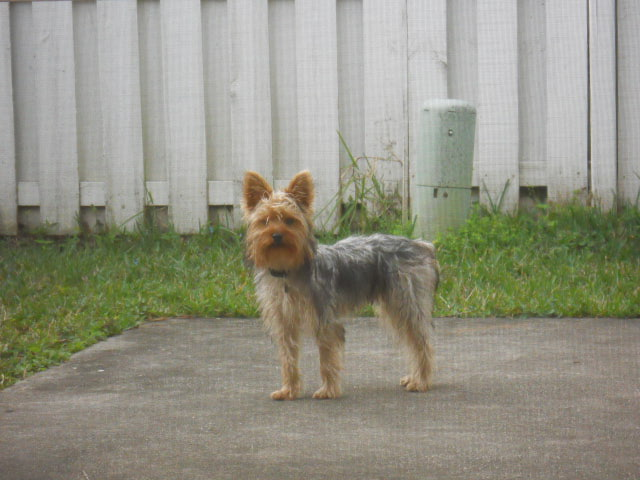 agressive silky terrier
Question
Lucas 1 year old
Hi Jennifer:
I have a
agressive silky terrier
Question
Lucas 1 year old
Hi Jennifer:
I have a
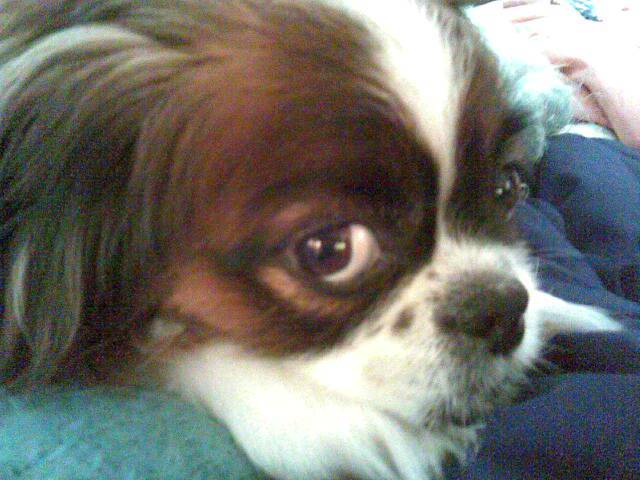 Post bladder surgery potty training for INDOORS!
QuestionTiki
QUESTION: Dear Dr. Connor,
My 10 ye
Post bladder surgery potty training for INDOORS!
QuestionTiki
QUESTION: Dear Dr. Connor,
My 10 ye
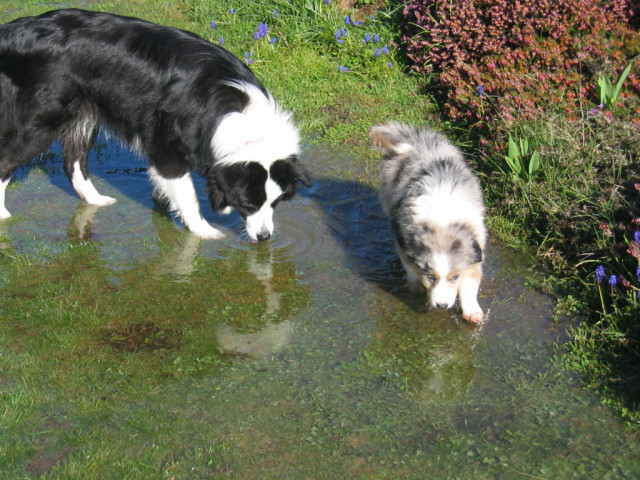 Dog in Heat?
QuestionLily and Jorge
QUESTION: Hello,
We have
Dog in Heat?
QuestionLily and Jorge
QUESTION: Hello,
We have
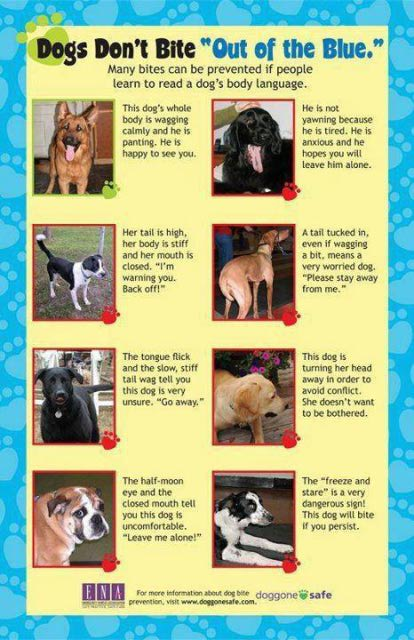 Is this aggression, dominance, or play?
QuestionQUESTION: I have a question regarding doggy beh
Is this aggression, dominance, or play?
QuestionQUESTION: I have a question regarding doggy beh
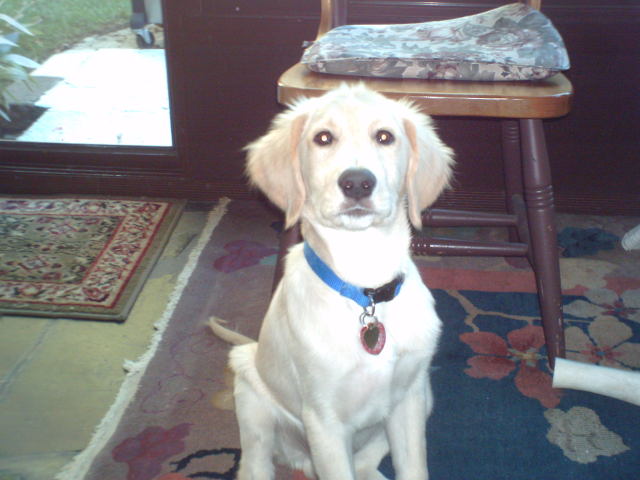 my 7 month old golden changed for the worse
QuestionRiley at 6 months
QUESTION: I got a gold
my 7 month old golden changed for the worse
QuestionRiley at 6 months
QUESTION: I got a gold